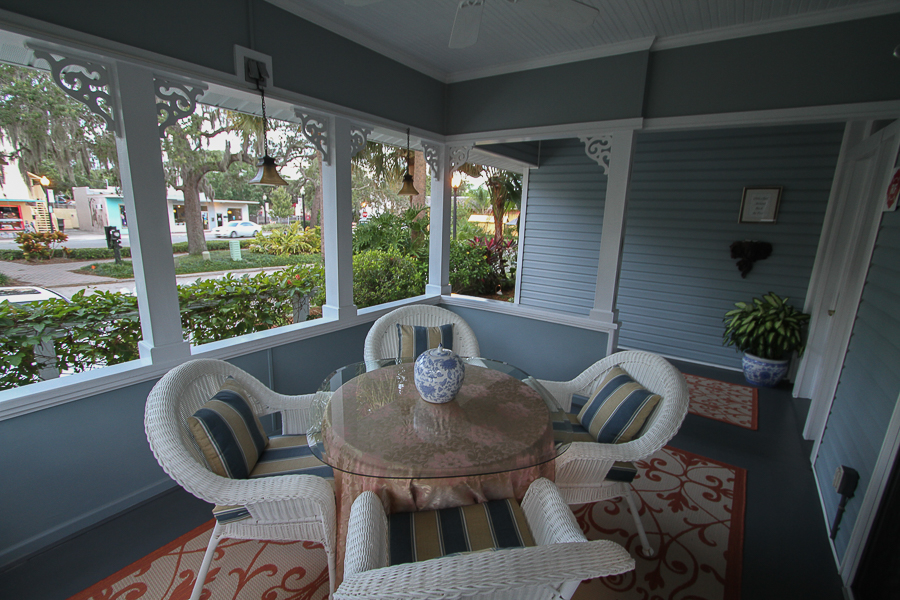
by Editor | Nov 2, 2015 | Florida, North America, United States
We felt instantly welcome when we arrived at the Meranova Guest Inn, tired and hungry from a long drive. Within minutes we were settled in our rooms, one fronting a central garden and the other facing the town’s most popular street. While I declined Frank’s generous offer of a cocktail I immediately pounced on one of his homemade brownies. During our stay we found the owners Frank Baiamonte and David Roy to be efficient, punctual, knowledgeable about the area, and gracious hosts.
The name of the property meant Sea Star from the words mer (French for sea) and nova or bursting star. To honor it there was a starfish on the property logo. The location in the heart of Dunedin, steps away from Main Street, could not be beat. We appreciated the amount of labor and dedication the owners had poured into the property over the years. In David’s own words, “We have been able to do everything ourselves on the property except for income taxes and fix refrigerators.”
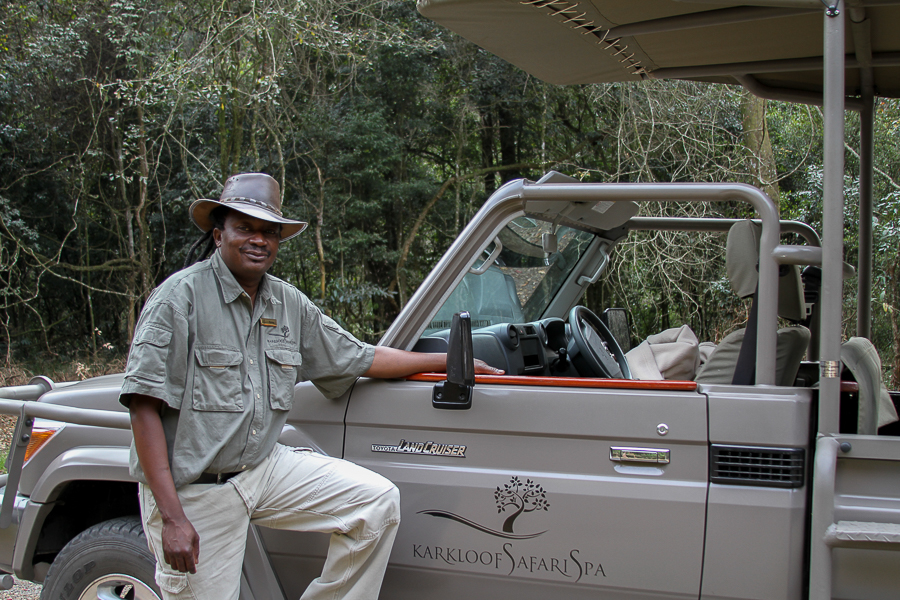
by Editor | Oct 21, 2015 | Africa, Kwazulu Natal, South Africa
Perhaps because game viewing at the Karkloof Safari Spa was limited to mostly non predator species the animals we encountered were relatively unafraid of vehicles. Many, including a rhino mom and her young, allowed us to park within scant feet of them with nary a glance in our direction. They knew we were there. They just didn’t mind/ Having a private vehicle with a knowledgeable and friendly guide enhanced the experience manifold.
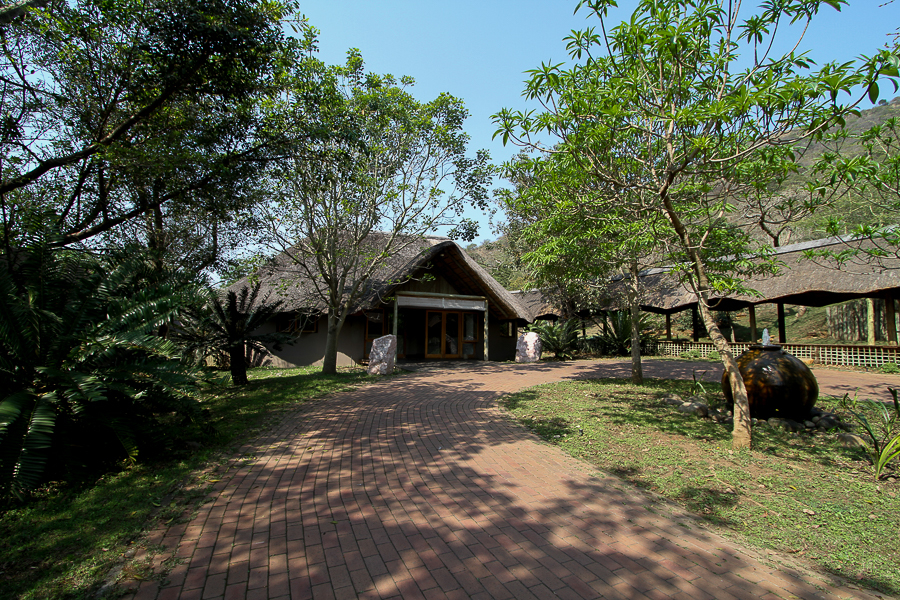
by Editor | Oct 16, 2015 | Africa, Kwazulu Natal, South Africa
When on safari spa treatments are a well deserved respite from the bump and grind of the four wheel vehicles and the dust of the rides. However, spa time is always scarce and limited to non game viewing hours when everybody scrambles to book treatments. Frequently spa facilities are limited and often seem like an afterthought. The idea of a customer centered luxury and gourmet oriented safari and spa property appealed to me as soon as I heard about it. I was hesitant because reaching Karkloof Safari Spa required a side trip to KwaZulu-Natal, a province of South Africa I was not planning to go to on that trip and the airfare was not inexpensive. In the end, I could not resist the temptation of an all inclusive luxury spa and safari property. I was glad I went.
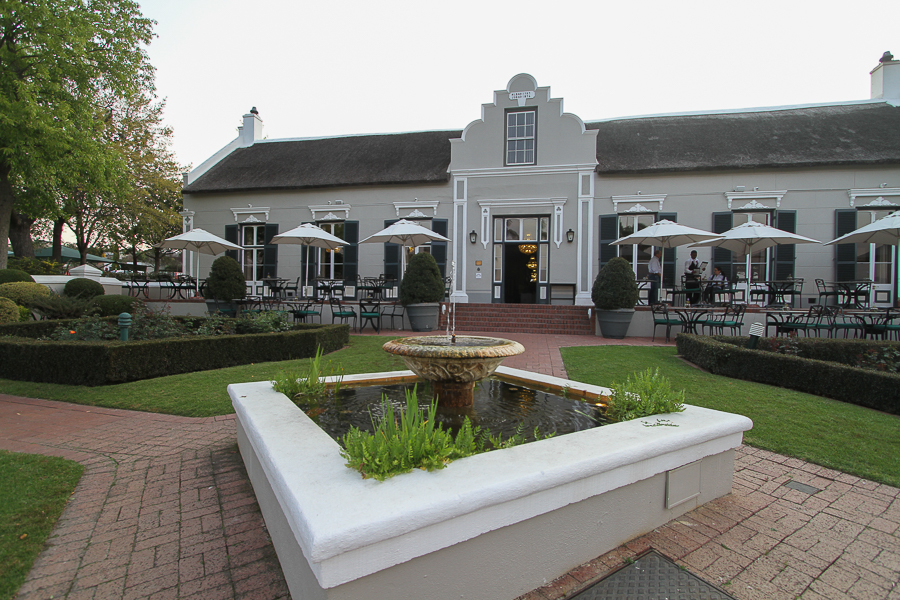
by Editor | Oct 12, 2015 | Africa, Cape Town, South Africa
From the moment Judain from reception greeted me in the off street gated parking lot until his colleague Fenna waved good-bye from the main building terrace I felt welcome at the Grande Roche Hotel. Amenities like fresh flowers, wine and tasty treats in my suite on arrival added to my comfort. Smiling faces and offers of assistance met me at every turn. The staff followed up courteous words with immediate action. For example, when the WiFi in my suite wouldn’t work Judain bent over backwards until it was fixed. Like her staff Anja Bosken, general manager, who I met for dinner, was a charming and welcoming host.
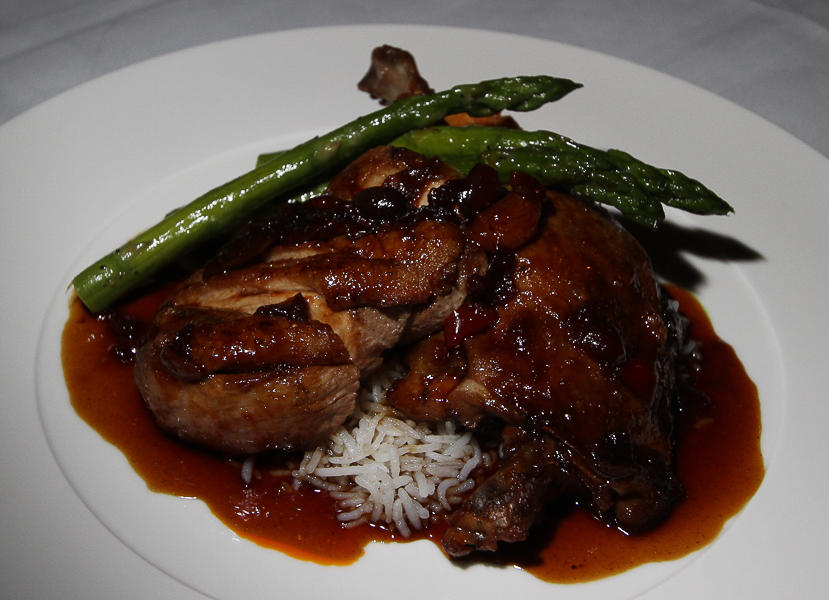
by Editor | Oct 12, 2015 | Florida, North America, United States
We liked that the restaurant butchered all its own meat and sourced all produce, mostly organic, locally. From the soup amouse bouche to dessert our meal was delicious and the attentive and friendly service a perfect match. Should we return to Dunedin The Black Pearl will be at the top of our list of fine dining restaurants.
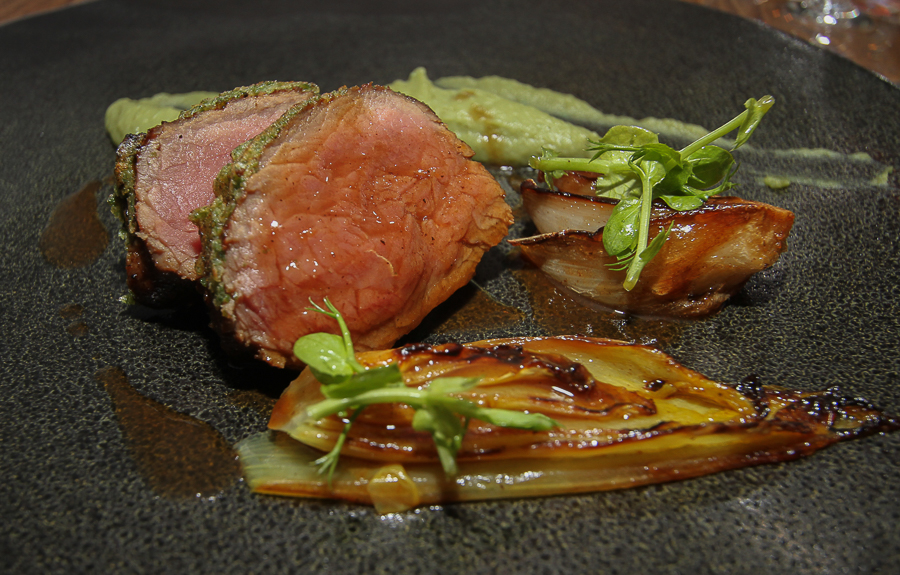
by Editor | Oct 2, 2015 | Africa, Franschhoek, South Africa
Arriving in the early evening at Ryan’s Kitchen I felt instantly drawn by the casual atmosphere. Lana, who I later found out was the chef’s wife and restaurant co-owner, welcomed me in from the chilly outdoors with a bright smile, and seated me right away. Her warm reception was in evidence all through the meal.
By the time my dinner companion arrived the food smells that permeated the restaurant had awoken my appetite. We selected the tasting menu with wine pairings. I appreciated the chef’s versatility. He was able to prepare venison with the same apparent ease with which he prepared fish in spicy coconut milk in a bag. The South African wine pairings kept up the pace.
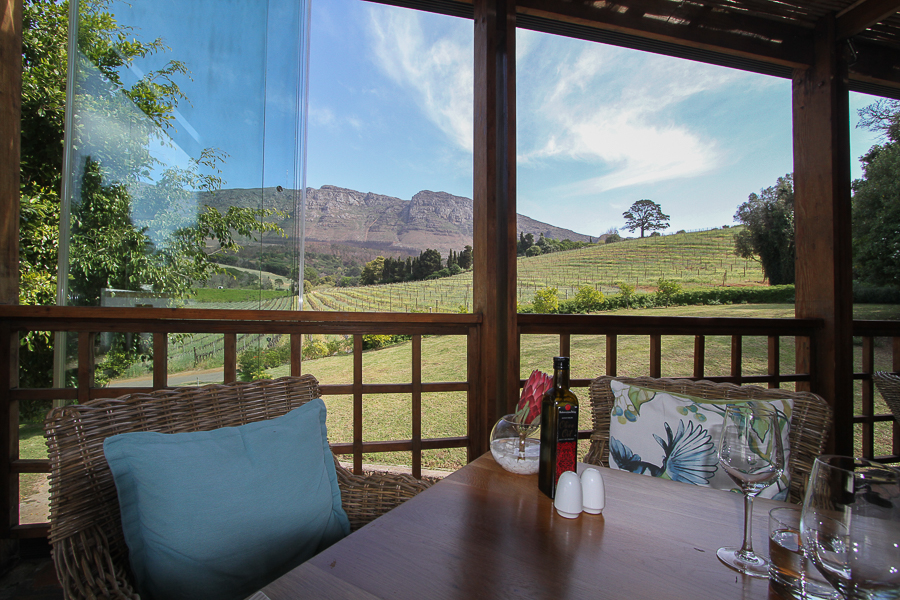
by Editor | Sep 28, 2015 | Africa, Cape Town, Simon and Baker Travel Review, South Africa
Sitting in a corner table in the newly redone glass enclosed veranda I marveled at the beautiful view of the Buitenverwachting Estate’s vineyards in the foreground and the Constantiaberg Mountains in the background. It was true to the property name which I’m told translates to “beyond expectations.” Even if the meal had been disappointing, which it was not, I would have enjoyed my time there.
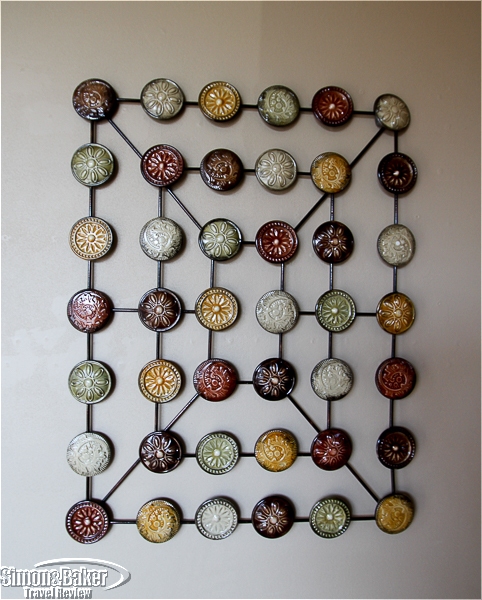
by Editor | Sep 5, 2015 | Indiana, North America, United States
Overall Impression I found the Tranquil Vibe Day Spa, tucked away in a suburban neighborhood in Bloomington, Indiana, when I needed it most. Although it was only a 10 minute drive from my central location adjacent to the convention center, the ambiance at the spa was serene and inviting. t was exactly what I needed amid a week of back to back meetings and hectic schedules.
Eric Linder, co-owner with his wife Lori, was the smiling staff person at reception when I arrived frazzled after an unexpected delay locating a taxi. He was personable and friendly, making me feel instantly welcome. He and Taylor, my facialist, were considerate and service oriented. The Thursday morning I had my treatments it was an oasis of quiet and solitude.
I especially liked Lisa’s massage. She kneaded my muscles deeply, rubbing out well cemented kinks and knots. I left the spa feeling newly relaxed and ready to face a busy rest of the day.
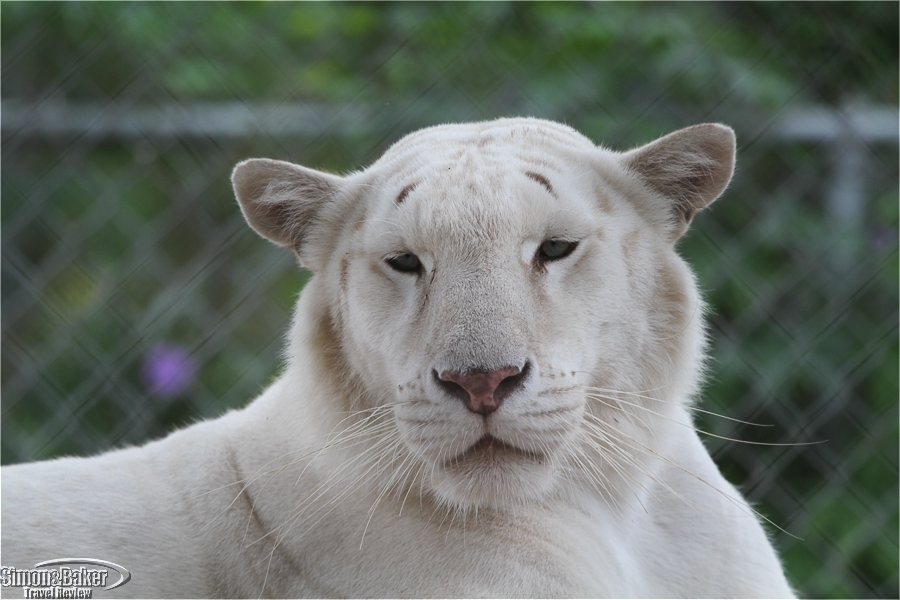
by Editor | Aug 3, 2015 | Florida, North America, Simon and Baker Travel Review, United States
The friendly and well informed tour staff enhanced our experience. We liked the thoughtful enclosures designed with the needs of each species in mind (such as an air conditioned section for the snow leopards, special soil for porcupines to dig holes, and water features for the tigers); the pristine and nearly smell free facility and animals; and how relaxed the beasts were during our visit.
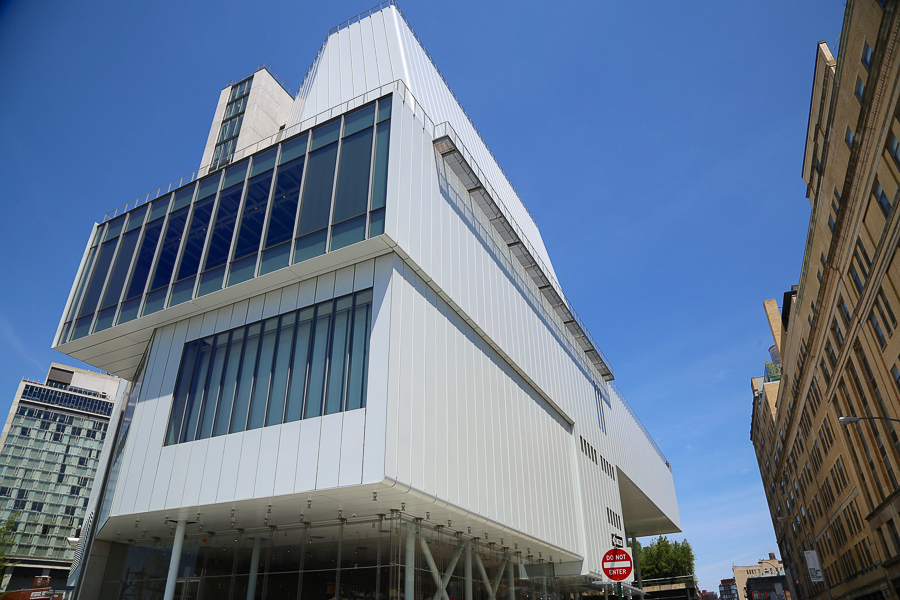
by Editor | Jun 25, 2015 | New York, North America, United States
While the works on display were a delight to see, the building itself was also a work of art. It had a modern vibe and was easy to navigate. It offered many ways to traverse the museum and to enjoy its unique location near the Hudson River.
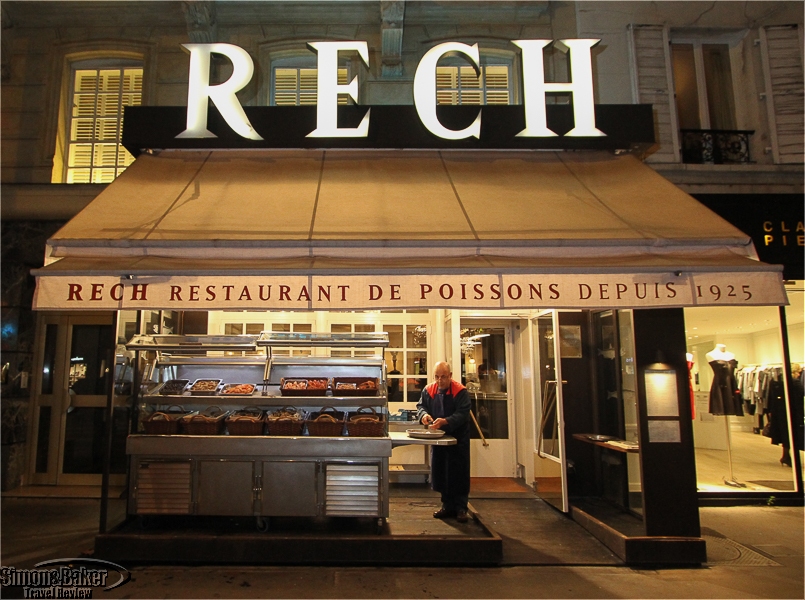
by Editor | Jun 15, 2015 | Europe, France, Paris, Simon and Baker Travel Review
The first time were went to Rech, part of the multinational Alain Ducasse culinary portfolio, we had a most pleasant lunch. On our return visit we had an equally delightful dinner. The modern understated yet warm décor with blond woods and a convivial ambiance were a good match for the well prepared tasty meal, aesthetically pleasing presentation, and friendly and efficient bilingual service.
Although we were the first to arrive the two room upstairs dining section filled up as the evening wore on. Yet we never lacked for anything at our table. Attentive eyes glanced by en route to the second room, and at the most discrete indication from us someone would immediately attend to our request. The table side dish preparation, including fish deboning, enhanced the experience.
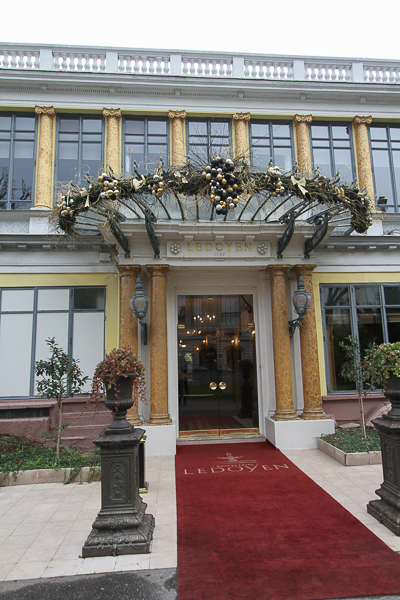
by Editor | Jun 12, 2015 | Europe, France, Paris, Simon and Baker Travel Review
While we had dined well at the same venue a number of times in the past that was our first meal since Chef Yannick Alleno had taken the reigns of the newly named Alleno Paris. Our multi course tasting menu was a most pleasant surprise.
Lunch was a blend of classical French cuisine yet modern at the same time. From the Krug by the glass to the final bite of sweets at the end the meal was a success. Delicious, refined and beautifully presented dishes paired with attentive, warm and detail oriented service matched the elegant setting in a historic building steps away from the famous Champs Elysees.
The chef’s enthusiastic back to basics sauce centered culinary style was simultaneously rewarding and refreshing. Each dish was a journey of discovery far enough from the norm to be intriguing yet still close enough to our zone of comfort to be pleasurable and fun. We congratulate him and his team on their success, and look forward to following them in the new restaurant at the Ledoyen Pavillon.
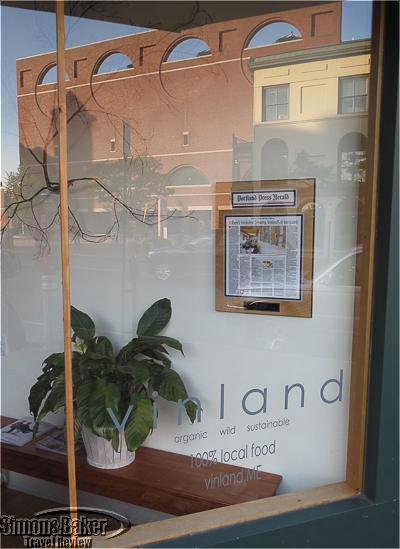
by Editor | Jun 12, 2015 | Maine, North America, United States
In this day of economies of scale, the popularity of fusion cuisine and a seeming infinite variety of imported products, a restaurant striving to serve local meals in the true sense of the word seemed to stretch the imagination. Intrigued and drawn by Vinland’s approach to cooking rooted in the land, sea, and traditions of Maine, and the culinary and nutritional wisdom of indigenous cultures with all local ingredients, we went out of our way to sample their food. We also wondered how the influence of new Nordic cuisine (especially restaurants Noma and Faviken where the chef had worked) would translate across the Atlantic to Maine’s similar bioregion.
By local the restaurant meant no citrus or cane sugar, plenty of yogurt whey, rhubarb, sumac, cranberry, maple, honey, and dozens of other ingredients, including herbs, fruits, nuts, roots, and mushrooms. While the wines were all imported they offered the most natural and organic wine list we have come across.
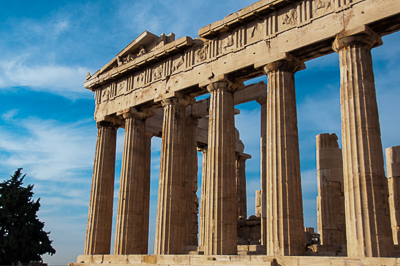
by Editor | Jun 11, 2015 | Europe, Greece
Located in south eastern Europe, on the southern end of the Balkan Peninsula Greece is near the three continents Europe, Asia and Africa. It has an area of 131,957 square kilometers and a population of about 11 million. The country consists of three main geographic areas: the largest is the mainland, the Peloponnese peninsula separated from the mainland by the canal of the Corinth Isthmus, and some 6,000 islands scattered in the Aegean and Ionian Sea in the Greek archipelago.
A large segment, 80 percent, of the country is mountainous or hilly. At the same time, it has 16,000 kilometers of coastline. Of those 7,500 are in the thousands islands of the Greek archipelago.
It has an area of 131,957 square kilometers and a population of about 11 million. The country consists of three main geographic areas: the largest is the mainland, the Peloponnese peninsula separated from the mainland by the canal of the Corinth Isthmus, and some ,.000 islands scattered in the Aegean and Ionian Sea in the Greek archipelago.
A large segment, 80 percent, of the country is mountainous or hilly. At the same time, it has 16,000 kilometers of coastline. Of those 7,500 are in the thousands islands of the Greek archipelago.
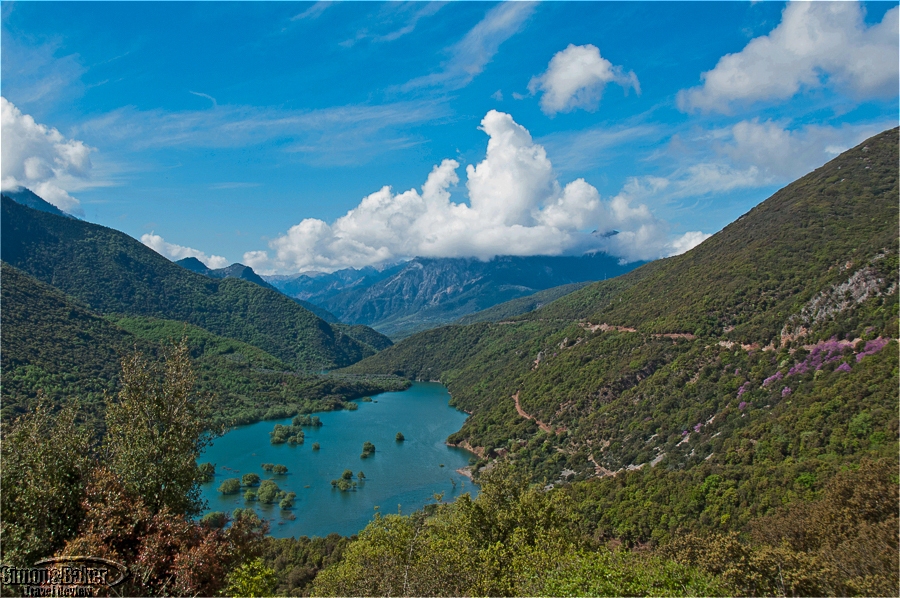
by Editor | Jun 1, 2015 | Europe, Greece, Simon and Baker Travel Review
With their wealth of road tourism experience, flawless planning and sensitive understanding of the area, Tripology made my journey through the Pindus Mountains an exhilarating combination of spectacular mountain wilderness and suspenseful road travel, a mix so compelling it should come with a warning label.
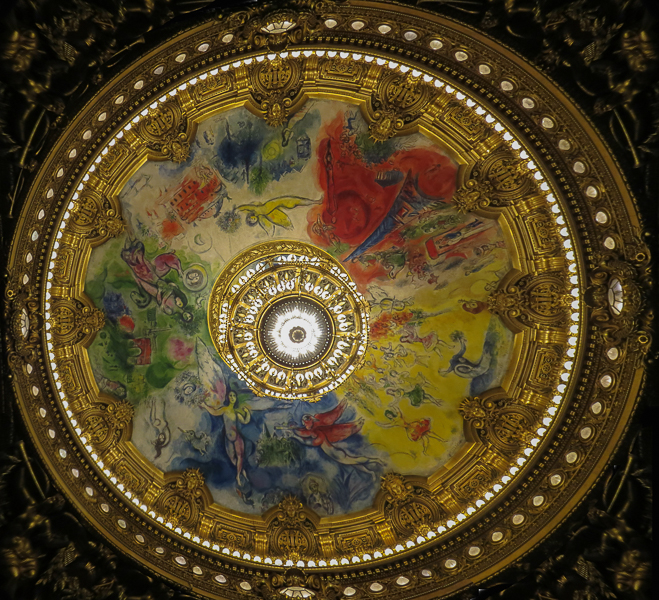
by Editor | Jun 1, 2015 | Europe, France, Paris, Simon and Baker Travel Review
We liked the pretty music including several memorable arias. The staging was thought provoking. The performance developed at times simultaneously, at least in part, in more than one of the six sections in which the stage was divided for the show. The set up, while novel, was distracting and at times required so much concentration that it detracted from the experience. It was not to our liking. Having children actors in one part of the stage and adult actors playing the same children in another at the same time also made it confusing to know what was going on, and to understand the allegorical meaning of the vignettes in the two stages. Also notable were the bright costumes, especially the eye popping fuchsia sequined evening dress of the witch.
During the intermission, we strolled around the most beautiful areas, admiring the interior and observing the crowd. Many held champagne flutes or light snacks from the various vendors peppered throughout the lobby. The evening view of the long Avenue de l’Opera outside was a treat. When the chimes called for the restart of the performance more than a few seemed almost reticent to abandon their building browsing.
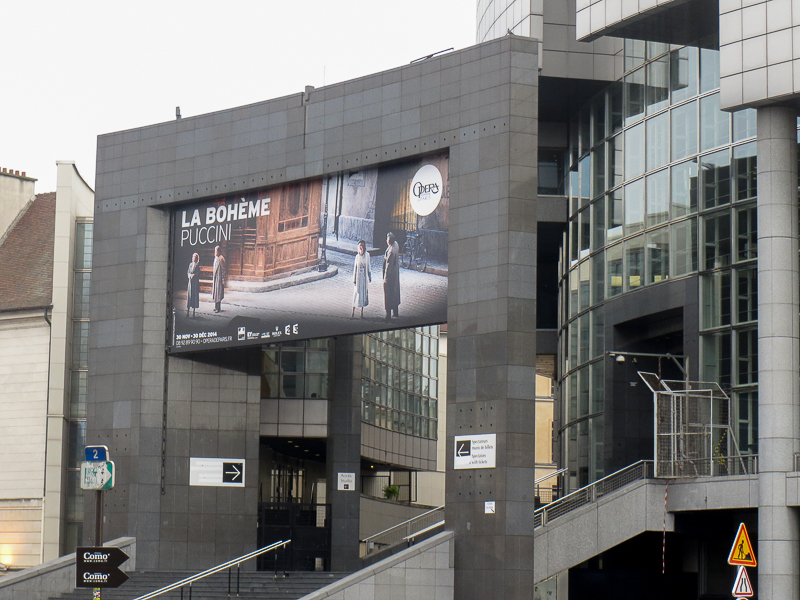
by Editor | Jun 1, 2015 | Europe, France, Paris, Simon and Baker Travel Review
We liked the relatively comfortable Category 1 seats near the front of the theater with an unobstructed view of the stage. The modern theater offered ample selection of seats.
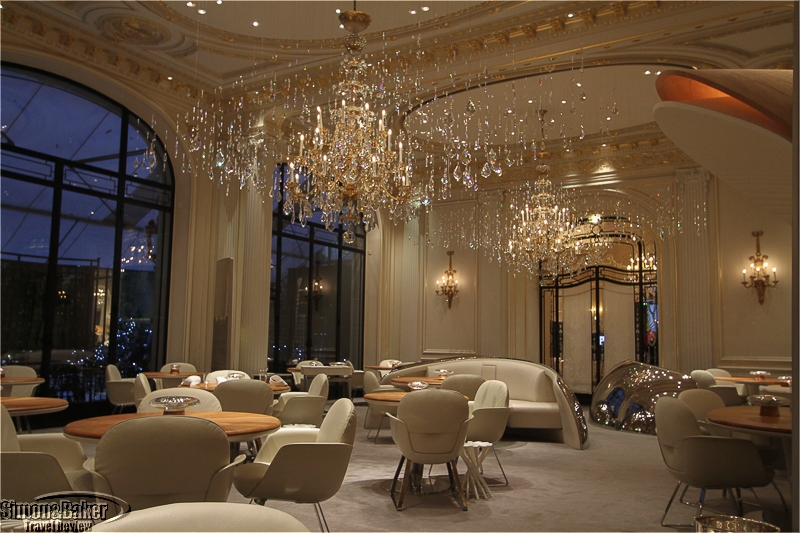
by Editor | May 1, 2015 | Europe, France, Paris, Simon and Baker Travel Review
As soon as we entered we focused our attention on the restaurant’s partial decorative transformation since our last visit. Armed with a glass each of well chilled rose champagne we set out to discover the reincarnation of Alain Ducasse au Plaza Athenee. A server brought us complimentary carrot, celery and apple juice with an ice cube, setting the tone for the rest of the healthful meal. Hors d’œuvre bites followed on the heels of a staff person who explained the menu’s cereal, vegetable (produce were brought from the garden of the Chateau de Versailles through an exclusive partnership) and seafood options. While it was possible to order some meat products they were not listed on the regular menu because they were discouraged.
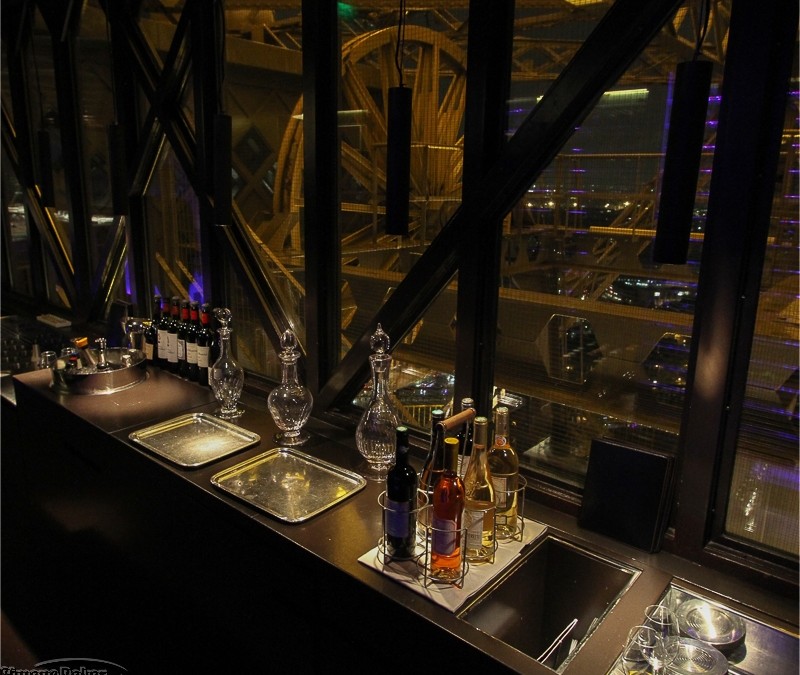
by Editor | May 1, 2015 | Europe, France, Paris, Simon and Baker Travel Review
Our dinner at Le Jules Verne restaurant was magical. From the moment we rode the private heated elevator with an escort from the ground floor of the South Pillar, up 125 meters to the restaurant reception half way up the famous Eiffel Tower in Paris, we felt special. Although our expectations were high, based on previous visits to the restaurant at France’s most iconic monument, we were delighted with the evening.
We were pleased to have been assigned one of the few coveted window side tables. Below us, thousands of lights twinkled, bringing to mind the words City of Lights as Paris is also known.
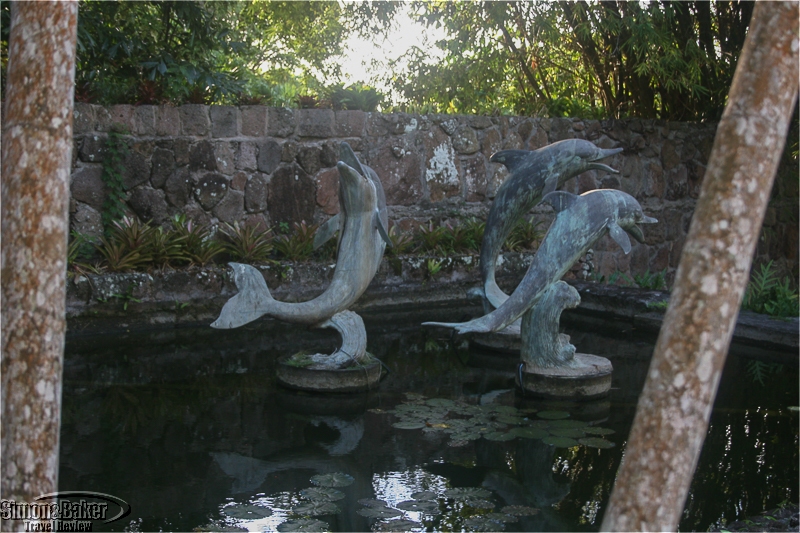
by Editor | Mar 23, 2015 | Nevis, Simon and Baker Travel Review
A last minute addition to my itinerary in Nevis turned into an unexpected delight at the lush and lovingly maintained The Botanical Gardens of Nevis. The 6.1 acre property in a residential area of the small Caribbean island housed plant nurseries, fruit orchards, Orchid Terraces, a Rainforest Conservatory modeled after the Palm House of the Royal Botanic Gardens, Kew as well as Cactus, Palm, and Bamboo gardens. The private estate was open to the public for daytime visits and special events.
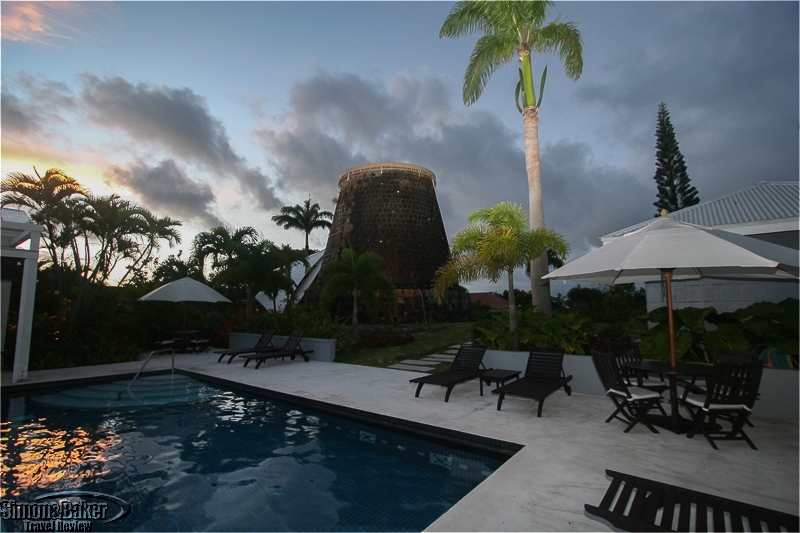
by Editor | Mar 23, 2015 | Nevis, Simon and Baker Travel Review
My favorite memories of the Montpelier Plantation and Beach in Nevis, of Nevis and Saint Kitts, include the early morning nature sounds of dogs barking, donkeys braying, and doves cooing in the distance. I enjoyed them most while swimming or when I gazed at the sunrise views of Saddle Hill and the ocean from the covered porch behind my room. At that hour, when the rays of the sun were gentle, before many guests had risen from their beds and the staff had arrived, I had the entire pool area to myself.
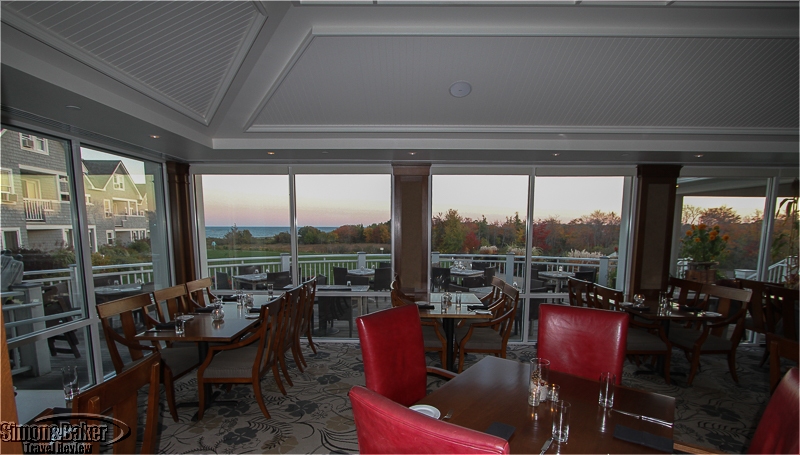
by Editor | Feb 9, 2015 | Maine, North America, Simon and Baker Travel Review, United States
The Inn by the Sea offered a long list of features we appreciated and enjoyed during our fall visit to Maine. From the beginning, we were impressed with our comfortable and well appointed two bedroom suite with full kitchen, gas fireplace, large balcony and fantastic views of the Atlantic Ocean and colorful fall foliage. Lovingly maintained lawns and planters, excellent spa services, an exercise room, and quick access to walking and running paths added to the property’s desirability.
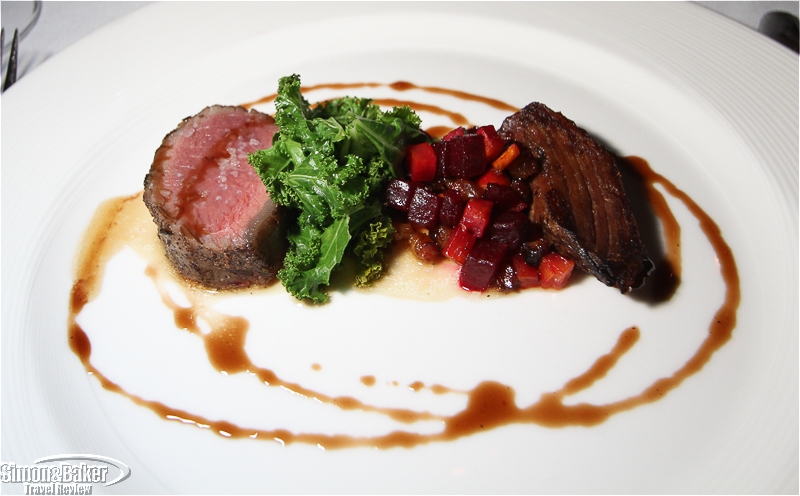
by Editor | Nov 1, 2014 | Maine, North America, Simon and Baker Travel Review, United States
It wasn’t until restauranteur David Turin opened nine restaurants that he founded the restaurant he had wanted to open for many years, his opus. That led to the restaurant’s name. Although entering through David’s Monument Square, the restaurant’s larger sister eatery, was a bit jarring, dinner at this restaurant within a restaurant was the most upscale dining experience we had in Portland, Maine.
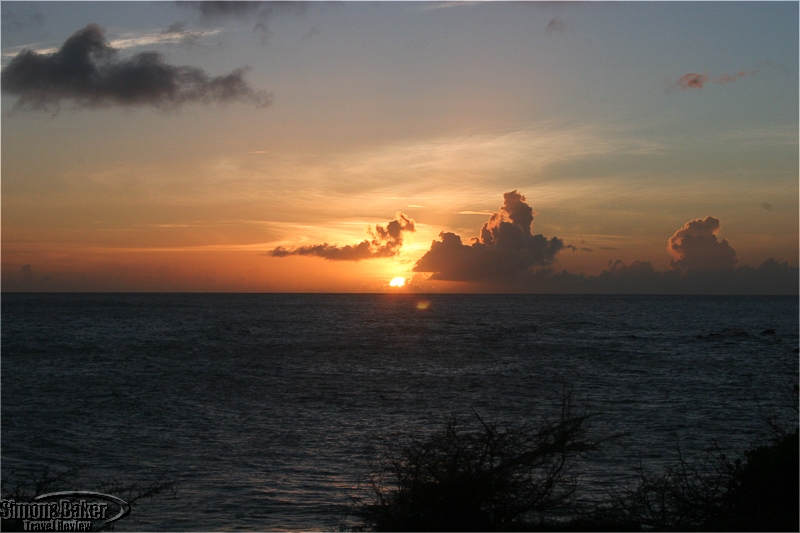
by Editor | Nov 1, 2014 | Nevis, Simon and Baker Travel Review
Unlike many Caribbean destinations, Nevis, a 36 square mile corner of serenity in the country of Saint Kitts and Nevis in the Leeward Islands, housed no duty free shopping boutiques (nor much shopping to speak of), casinos or fast food eateries. Only small cruise ships visited its shores. Its 12,400 residents share their homeland with 30,000 annual visitors who find refuge from the fast pace of their lives in the island’s three luxury hotels and sixty luxury rental homes, most of which are inland.
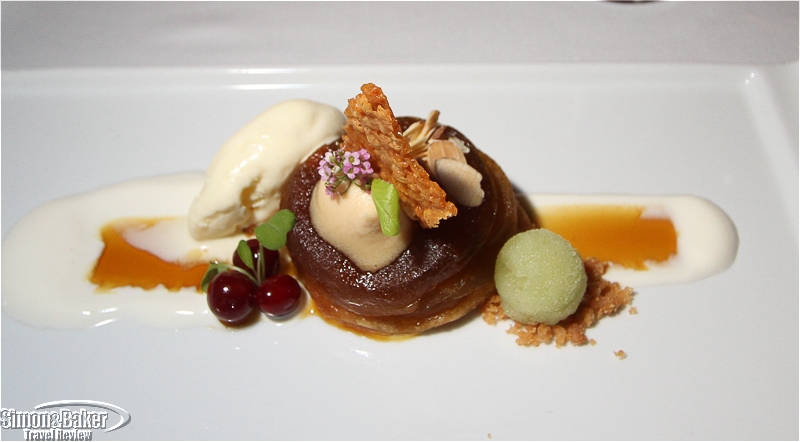
by Editor | Oct 1, 2014 | Maine, North America, Simon and Baker Travel Review, United States
After strolling around a gray, dreary and rainy Camden, Maine during a chilly autumn day, and a disappointing lunch in town we were loathe to drive back in the rain for dinner. We had heard good things about the restaurant and had hard to come by reservations so we moved forward as planned. As we drove down the dark two lane slick road from Lincolnville Beach south toward Natalie’s we wondered whether we would be better off returning to the dry and warm comfort of our inn.

by Editor | Oct 1, 2014 | Maine, North America, Simon and Baker Travel Review, United States
Cold, rainy gray weather made it challenging to enjoy the features, facilities and amenities of the Inn to full advantage. The 22 acre property had pretty green lawns and 500 feet fronting a rocky beach. Perhaps because the 32 rooms were spread across three separate buildings the only time we became aware it was full was at breakfast and when the parking lot overflowed.
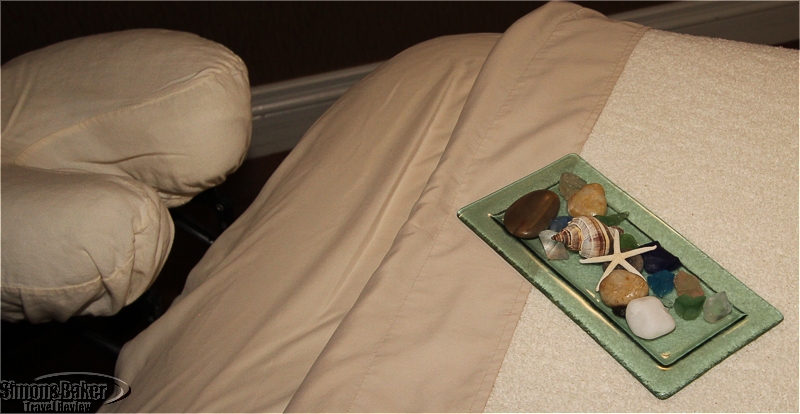
by Editor | Oct 1, 2014 | Maine, North America, Simon and Baker Travel Review, United States
At the beginning of our trip to Maine while we were in Portland, I searched high and low for a massage. Some windows announced treatments, but most of the time on close viewing the listing was unrelated to the shop where it was posted. One shop had a single masseuse and she was unavailable for several days. Others were less desirable. Frustrated, I gave up following several unsuccessful attempts at booking a massage.
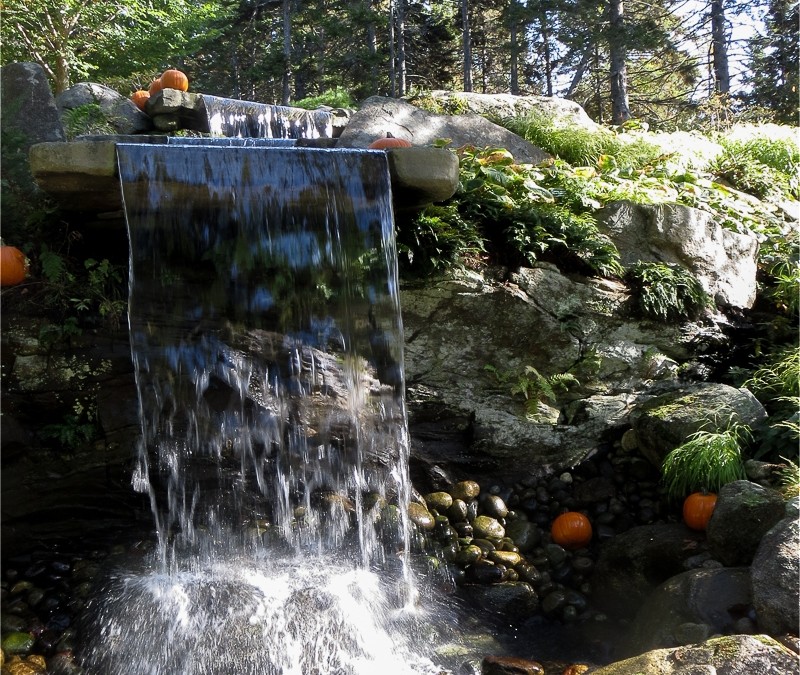
by Editor | Oct 1, 2014 | Maine, North America, Simon and Baker Travel Review, United States
The first surprise we had regarding the Coastal Maine Botanical Gardens was how popular it was when we arrived at midday on a Friday in the fall to find most of the parking space was already taken. The second surprise was how many areas beyond the immediate entrance felt secluded despite the number of people we knew were inside the attraction.
The 270 acre tidal shoreline park was the largest botanical garden in New England and the only botanical garden in Maine. It had display gardens, shore land trails, wild woodlands, 50 sculptures on exhibit (and rotating art exhibits inside the Bosarge Family Education Center), and educational programming. We liked the cleverly organized design of the attraction itself, its interactive features like the fairy garden, varied plant life, water views and separate garden sections. We especially appreciated the serenity of the contemplative garden.
It was evident the management and staff dedicated much thought and effort to the layout and maintenance of the Gardens. It was a pleasant place to spend time enjoying and admiring nature. We would gladly return should we be in the Portland or Boothbay area of Maine again.
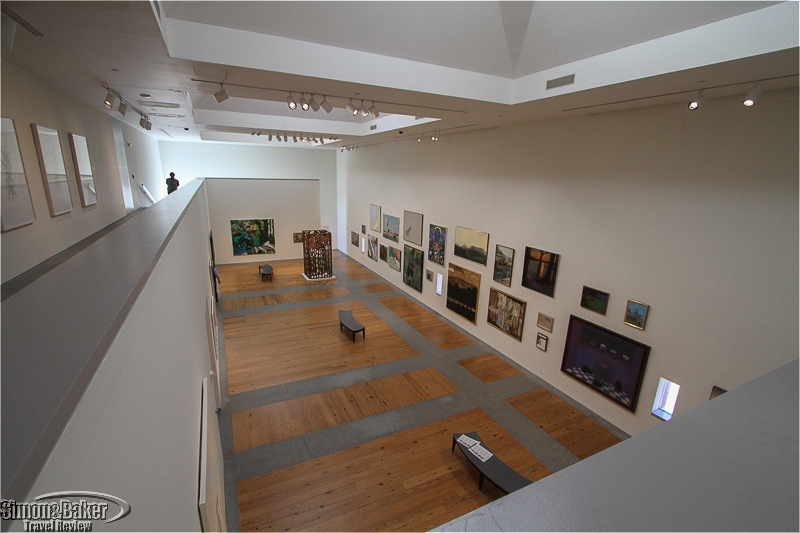
by Editor | Sep 1, 2014 | Maine, North America, Simon and Baker Travel Review, United States
When we planned our trip to Portland, Maine we didn’t anticipate spending time at a fine arts museum. After walking by the distinctive entrance of the Portland Museum of Art (PMA) a number of times, curiosity drew us inside. The light filled and spacious interior was inviting so we made time to return one morning, and to go to the Winslow Homer Studio in nearby Prouts Neck. It had been declared a National Landmark in 1966 and purchased by the Portland Museum of Art in 2006.
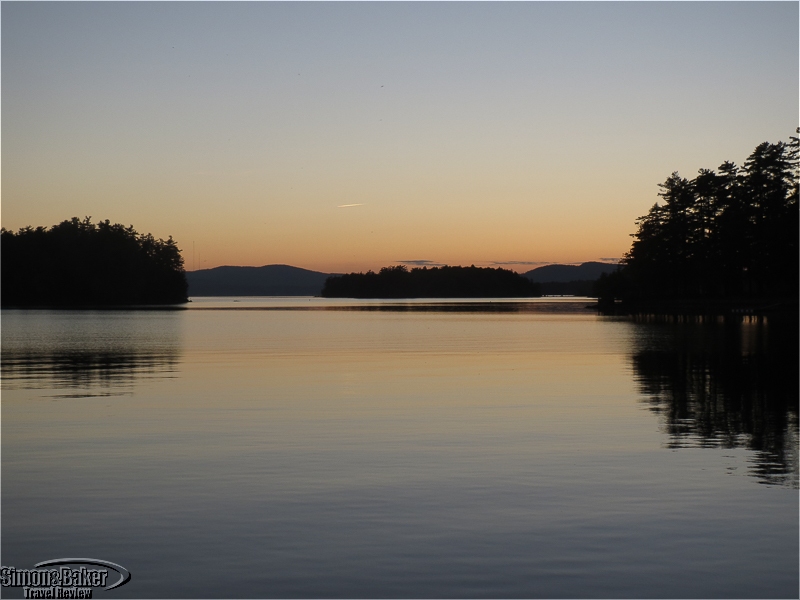
by Editor | Sep 1, 2014 | Maine, North America, Simon and Baker Travel Review, United States
Migis made us think of a luxury summer camp for adults and families. The 150 acre Maine property with 3,500 feet of shorefront on Sebago Lake was home to 35 Cottages. During our fall visit, we stayed in a new looking and spacious stand alone three bedroom two bathroom suite with internet connectivity, a view of the lake and a fireplace. In addition to the convenient meal plan, there were many features with appeal for a multigenerational audience. For example, there were hiking trails, beaches, tennis courts, massage rooms, a playground and a souvenir shop.
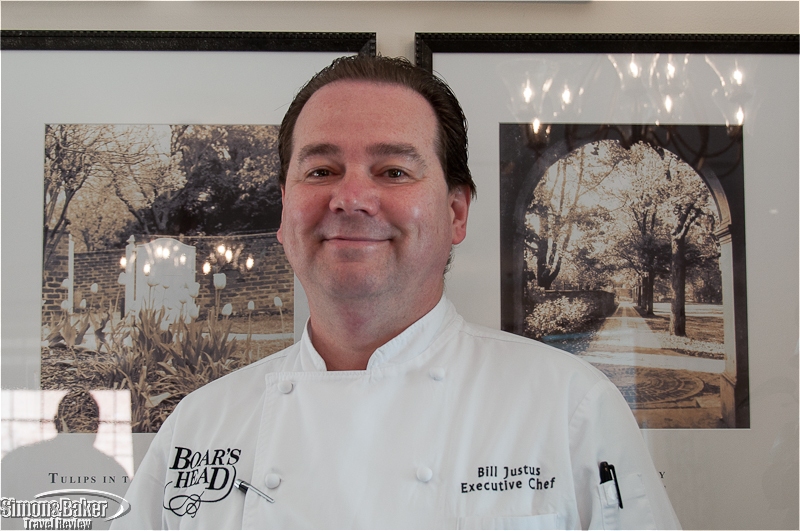
by Editor | Apr 1, 2014 | North America, Simon and Baker Travel Review, United States, Virginia
The Old Mill Room was the historical heart of the Boar’s Head. Built from the timber of an abandoned 1834 gristmill originally located along the banks of the Hardware River, it was moved piece by piece to be integrated in the construction of the inn’s main building in the early 1960’s in an effort to preserve and repurpose a valued piece of local history. The gristmill was famous for having survived the ravages of the Civil War and gone on to operate a whole six decades after it.
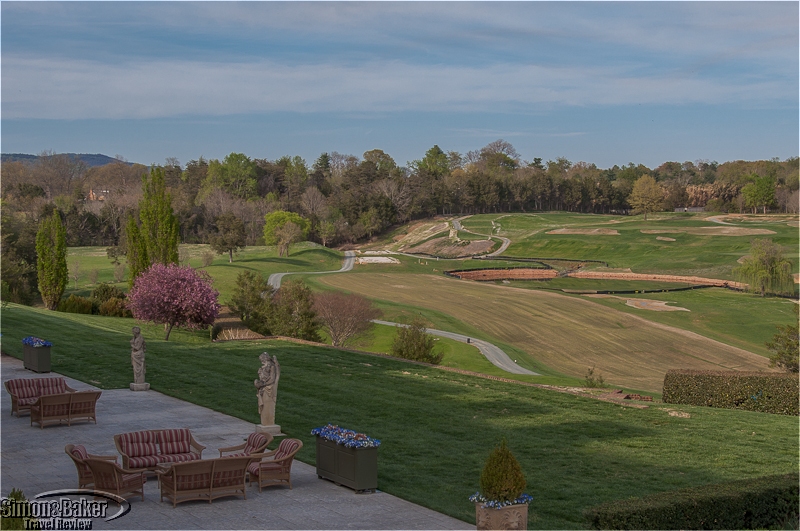
by Editor | Apr 1, 2014 | North America, Simon and Baker Travel Review, United States, Virginia
By Virginia standards, Keswick Hall might be considered a newcomer. The original mansion is, after all, a mere century old. But this exquisite property in the foothills of the Blue Ridge Mountains embraced me with all the charm and grace of an antebellum grande dame. And like most grande dames, it had an interesting history. It began in 1908 as Villa Crawford, an 8,000 square foot (745 square meter), two-story Italianate private residence built for Mr. and Mrs. Robert B. Crawford at the original cost of $100,000. After the untimely death of Mr. Crawford in 1919, the villa passed to a variety of owners and experienced diverse fortunes over the next seven decades before ultimately falling on hard times.
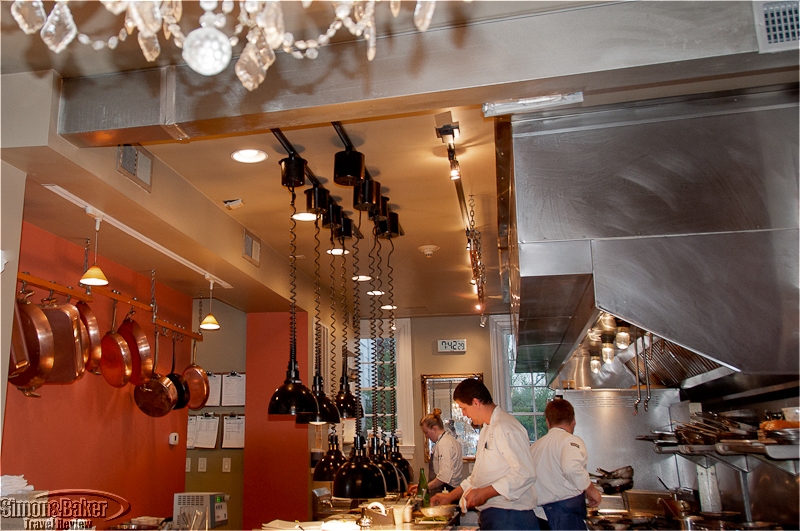
by Editor | Apr 1, 2014 | North America, Simon and Baker Travel Review, United States, Virginia
My evening at the Chef’s Counter of the Clifton Inn Restaurant was not a mere dinner, it was a culinary jam session where the virtuosity of the performers came through with every bite and pairings of unexpected flavors and texture were the norm. I had just been escorted through the intimate dining room with its tables formally set on white starched linen tablecloths. I had even caught a glimpse of an antique grand piano in a corner. It was the sort of place that spoke of classic fine dining with every detail. I paused at the door of the kitchen to take in the rather theatrical décor. A long row of immaculate copper pans were lined high against a coral wall and a gilded mirror was strategically placed on the far wall of the room to reflect the sparkling crystal chandelier that hung above the pale polished concrete counter. I scanned the room for television cameras and found none. I settled into my tall bar chair and got a full view the “real” kitchen, a working kitchen with state of the culinary art equipment and the organized clutter that ensures that not a single movement is wasted.
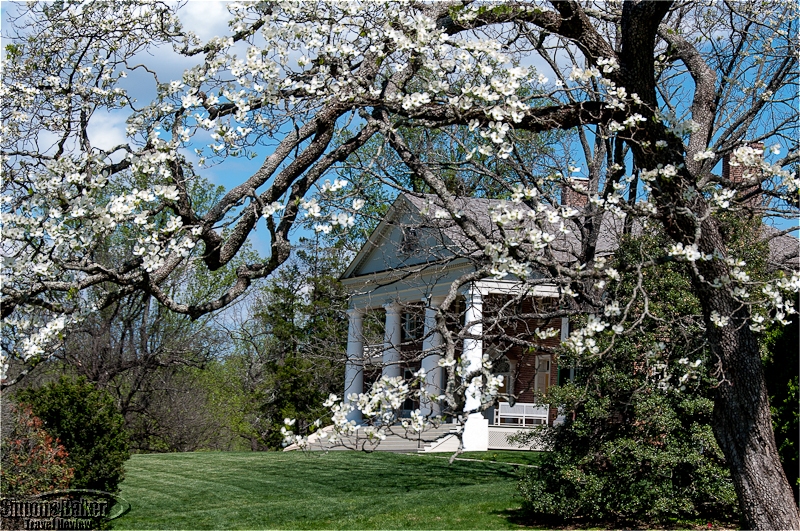
by Editor | Apr 1, 2014 | North America, Simon and Baker Travel Review, United States, Virginia
Set against the serene backdrop of the rolling hills of Central Virginia’s Blue Ridge Mountains, Charlottesville was a gracious historic small town of 43,000 inhabitants nestled in picture perfect natural surroundings, and a vibrant city with multiple personalities. Formed by royal charter in 1762 on the trade route between Richmond and the Great Appalachian Valley, Charlottesville is best known for its historic significance as the home of Thomas Jefferson. Recognized as one of the most important figures of the American Revolution, the man who penned the Declaration of Independence and the third President of the United States, Jefferson left his indelible mark on the city. In addition to Monticello, his “little mountain” home, he also conceived and designed the University of Virginia, in the neoclassical (also referred to as Jeffersonian) style. Both are now UNESCO World Heritage Sites. Today, Monticello attracts half a million visitors annually. The University of Virginia welcomes over 23,000 students, and contributes significantly to the cultural vitality of the area.
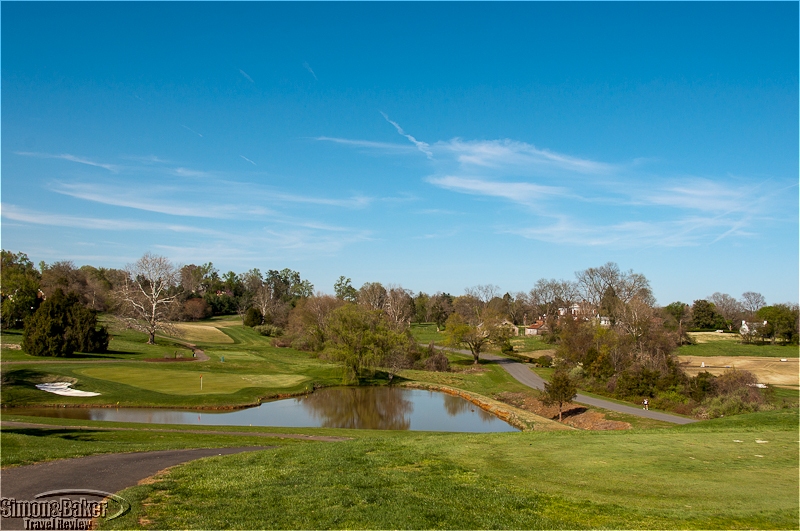
by Editor | Apr 1, 2014 | North America, Simon and Baker Travel Review, United States, Virginia
In 1759, Terrell’s Ordinary, a modest roadside inn that welcomed westward travelers, opened on land that was part of Virginia’s 1734 land grant, at the exact location where the Boar’s Head stands today. Since then, this lovely swath of rolling hills in the picturesque outskirts of Charlottesville, Virginia, has witnessed much history. It first became a country estate with a successful farming operation before enduring the ravages the Civil War. The property returned to life under a succession of owners before an inn, the Boar’s Head, was once again created in the mid twentieth century. It was subsequently acquired in 1989 by the University of Virginia Foundation. Today, the unique 573 acre (232 hectare), 175 guest accommodations local landmark boasts a championship golf club, outstanding sports facilities with multiple tennis and squash courts, an in house spa and an award winning restaurant.
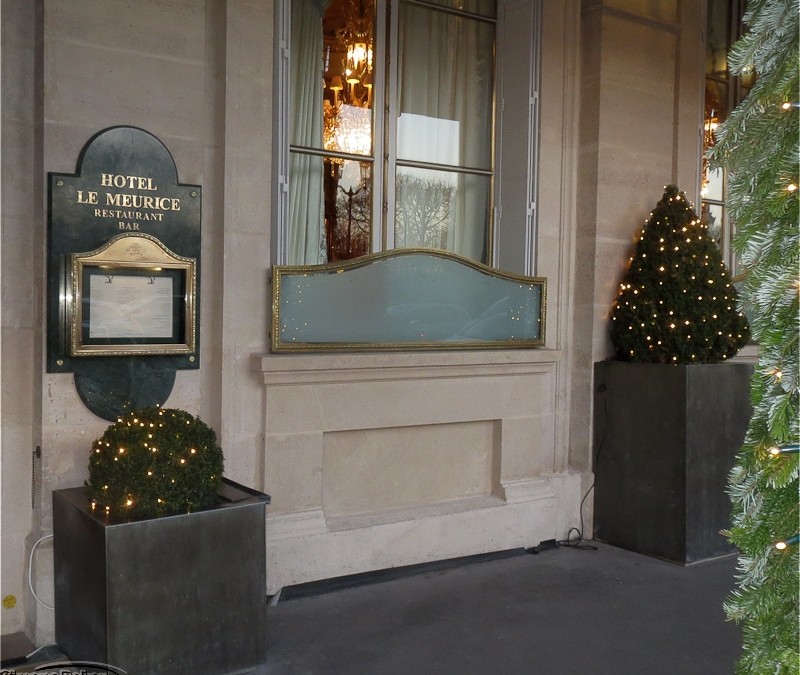
by Editor | Dec 1, 2013 | Europe, France, Paris, Simon and Baker Travel Review
For years I have liked the elegant dining room of Restaurant le Meurice in the eponymous hotel facing one of the city’s best known tourist streets. In 2013, famed chef Alain Ducasse was invited to oversee the food service at the hotel and restaurant. On our most recent trip to Paris, we had lunch there and were left with the impression that the restaurant has much promise.
Since our last visit we noticed subtle changes. For example, access to the restaurant was via the entrance foyer of the hotel rather than from the lobby lounge where it had been before. A new embroidered panel graced a section near the restaurant door, and Baccarat crystal art was in evidence in the dining room.
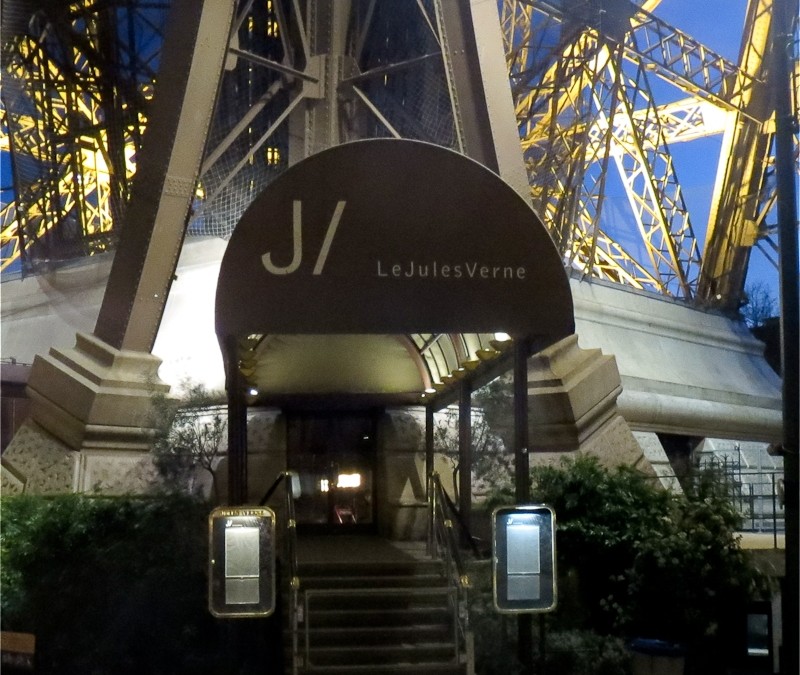
by Editor | Dec 1, 2013 | Simon and Baker Travel Review
As we approached the Eiffel Tower we realized we were in for a treat. The days long pattern of gray cloudy weather had broken. In its place, puffy clouds contrasted against a cerulean Parisian sky. Two uniformed staff members greeted us at the restaurant’s dedicated ground floor entrance past its understated brown awning. Once they confirmed our reservation for that day, we had to pass through a metal detector while one of the staff searched our personal belongings. The restaurant’s heated elevator, manned by another uniformed staff member, led us directly to a reception area where additional personnel greeted us, whisked away our winter coats and led us to a window side table with a metal bar in the middle and a striking view to the northeast.
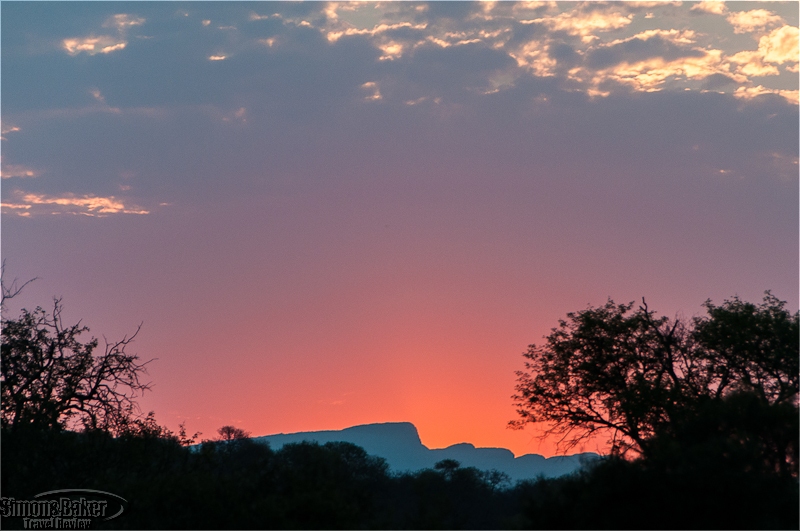
by Editor | Oct 1, 2013 | Africa, Kruger, Simon and Baker Travel Review, South Africa
Shumbalala is within the Thornybush Game Reserve, a private fenced game reserve near the southwestern boundary of South Africa’s legendary Kruger National Park. The Big Five (buffalo, elephant, leopard, lion and rhino), along with close to 150 species of mammals large and small, roam the reserve’s 14,000 hectares of bush. Although Shumbalala game viewing vehicles shared space with game viewing vehicles of 11 other properties on the reserve we seldom crossed paths with vehicles from other lodges. From the instant I passed through the gate of the Thornybush Game Reserve, the game viewing was indeed exceptional. No more than a 15 minute drive into it, the Shumbalala ranger who had welcomed me at the gate (no private vehicles were allowed in Thornybush) stopped within feet of a scene that made my eyes pop: white rhinos, a half dozen of them, snoozing in an untidy heap in the shade of a roadside tree.
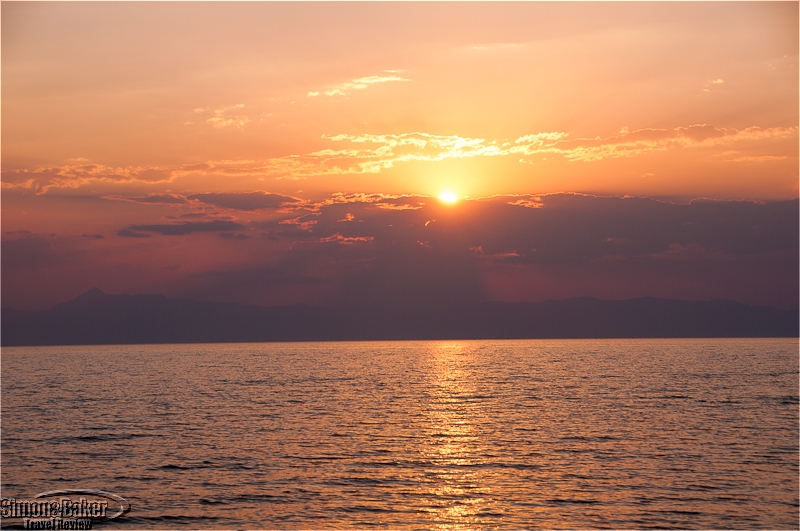
by Editor | Oct 1, 2013 | Africa, Lake Malawi, Malawi, Simon and Baker Travel Review
Located on the western side of Malawi’s Nankumba Peninsula, an area widely recognized as one of the most scenic around Southern Africa’s Lake Malawi, Pumulani was discretely tucked into a steep hillside. The only luxury property along the protected shores of the 9,400 hectare (36.30 square mile) Lake Malawi National Park and UNESCO World Heritage Center, Pumulani was designed by Dutch architect G. Hooft Graafland. In addition to a striking main lodge high on the hill and wide open to the endless lake vistas and the long aquamarine infinity pool below, he designed the property’s ten spacious rooms nestled into craggy granite outcrops around the hillside, each with a secluded private deck with lake views. Under their vegetal roofs of endemic grass meant to help offset their footprint and regulate their interior temperature, the rooms all but disappeared within their lush forest surroundings.
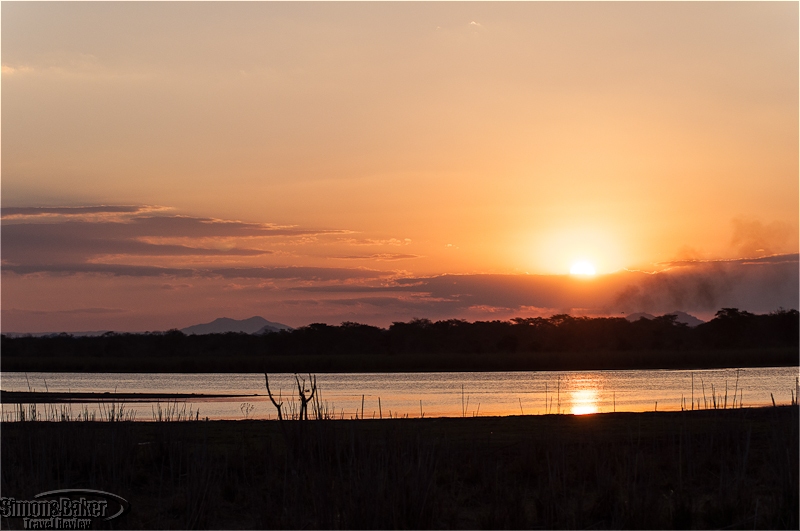
by Editor | Oct 1, 2013 | Africa, Liwonde, Malawi, Simon and Baker Travel Review
Stretched along the banks of the upper Shire River in southern Malawi, the 580 square kilometer (220 square mile) Liwonde National Park was known for its large population of hippos (mvuu in the local Tonga language). Located at the edge of a lagoon across the river from the park entrance, Mvuu Lodge could be reached only by boat. It immediately lived up to its name as we made our way across under the wary gaze of clustered periscope eyes from several hippo pods scattered around the water. Hippos were ubiquitous around the property as well, from large wooden sculptures in the lounge and guest tents to small beaded table ornaments.
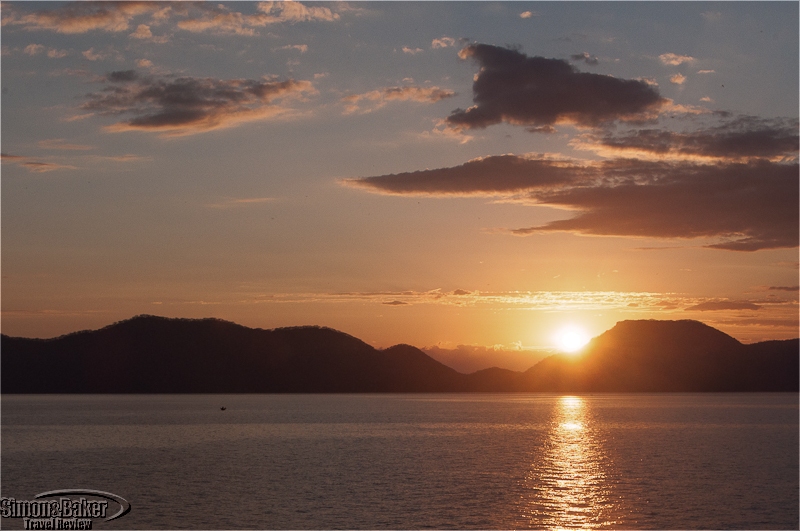
by Editor | Oct 1, 2013 | Africa, Lake Malawi, Malawi, Simon and Baker Travel Review
On rare occasions throughout my traveling life, I have come across a place so exceptional that I knew at first glance the experience would never leave me. Mumbo Island Camp was one such place. Located ten kilometers (six miles) offshore from Cape Maclear, in the heart of the 9,400 hectare (36.30 square mile) Lake Malawi National Park, a UNESCO World Heritage Center, the tiny island first appeared as a tumble of giant boulders rising straight up from the shimmering water. As we drew closer small reed and thatch chalets barely distinguishable from the tangle of trees began to materialize. We coasted to as stop at a wooden jetty to the warm welcome of camp manager Juliet Dahmen and her staff, and I set foot onto the most pristine tropical retreat I ever visited. The camp was located on two islands. The common areas were sitting just beyond the soft curve of a pretty golden sand beach on the main island. Meanwhile, a long wooden footbridge led to a granitic promontory jutting into the lake, where guest accommodations were perched at the edge of the rocks under a thick canopy of miombo woodland.
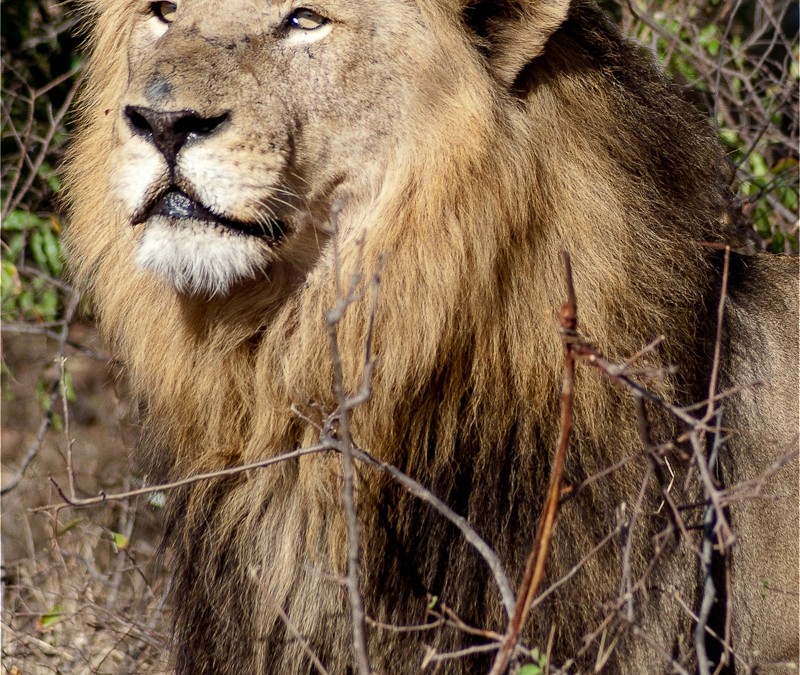
by Editor | Oct 1, 2013 | Africa, Kruger, Simon and Baker Travel Review, South Africa
It was my first visit to Motswari Private Game Reserve within the larger Timbavati Nature Reserve in South Africa. I had barely settled in and yet, as I made my way along the sandy path toward the common areas of the lodge, I experienced an unexpected sense of familiarity. The azure African sky and blazing early afternoon heat were filtering through the branches of towering native trees. Under their neatly trimmed conical thatched roofs, circular pale adobe structures stood in the dappled shade of the grove. I passed staff members along the way, who greeted me with the earnest warmth of someone who has been looking forward for me to show up.
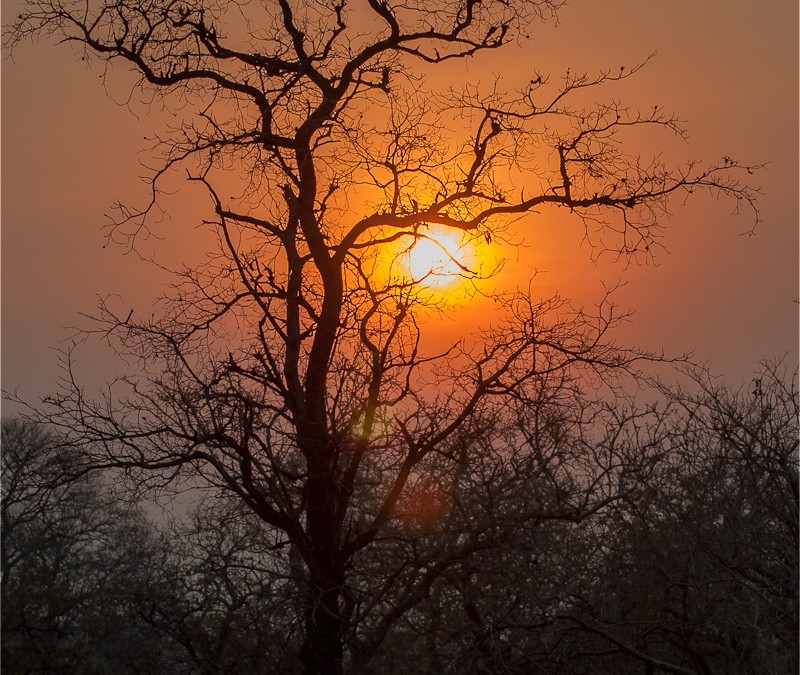
by Editor | Oct 1, 2013 | Africa, Majete, Malawi, Simon and Baker Travel Review
The Majete Wildlife Reserve in southern Malawi was a rare game viewing destination as yet mostly undiscovered by tourists. Originally proclaimed a protected area in 1955, the 70,000 hectare (270 square mile) swath of Africa’s Great Rift Valley in the lower Shire River had suffered such extensive poaching in the 1980s and 1990s that it had been all but written off as a wildlife reserve. In 2003, African Parks, an international nonprofit organization committed to the rehabilitation of Africa’s national parks took over the management of Majete. They have since methodically restored the park’s bio diversity and reintroduced over 2,500 animals including rare and endangered species. With the recent reintroduction of lions and leopards, Majete became the only Big Five park in the country. Nestled within a 7,000 hectare (27 square mile) private concession with exclusive tourism rights in one the most spectacular areas of the reserve, Mkulumadzi achieved a perfect balance of idyllic seclusion and first class accommodations in the repopulated wilderness area.
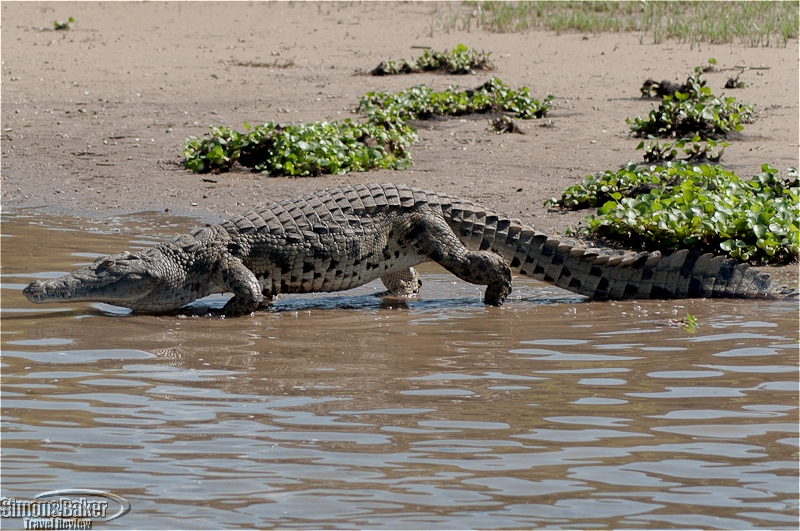
by Editor | Oct 1, 2013 | Africa, Malawi, Simon and Baker Travel Review
Malawi is a small landlocked country in southeast Africa (less than half the size of the United Kingdom) that had until recently attracted little notice from tourists. With its growing population exceeding 16 million living mainly in rural areas and its economy largely based on subsistence agriculture and international aid, it is one of the least developed nations in the world. However, this long, narrow wedge of granitic land shaped by the Great Rift Valley is home to spectacular vistas of rolling plateaus and mountainous regions dotted with wilderness reserves and national parks.
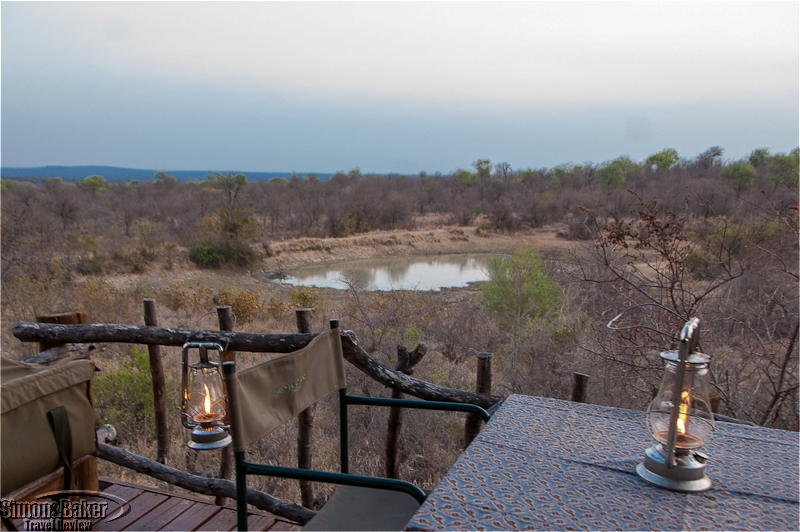
by Editor | Oct 1, 2013 | Africa, Kruger, Simon and Baker Travel Review, South Africa
Little Garonga was the last stop on a recent extended trip to southeastern Africa. After three weeks of dawn game drives, hectic transfer schedules and all around high voltage excitement, I was feeling somewhat depleted by the time I arrived. I couldn’t have chosen a better place to replenish my flagging energies and gently say goodbye to the wilderness before the long journey home. Set deep into the self contained 22,000 hectare (85 square mile) Greater Makalali Conservancy, west of the world famous Kruger National Park in South Africa, Little Garonga was a relatively recent luxury addition to the long established Garonga Safari Camp.
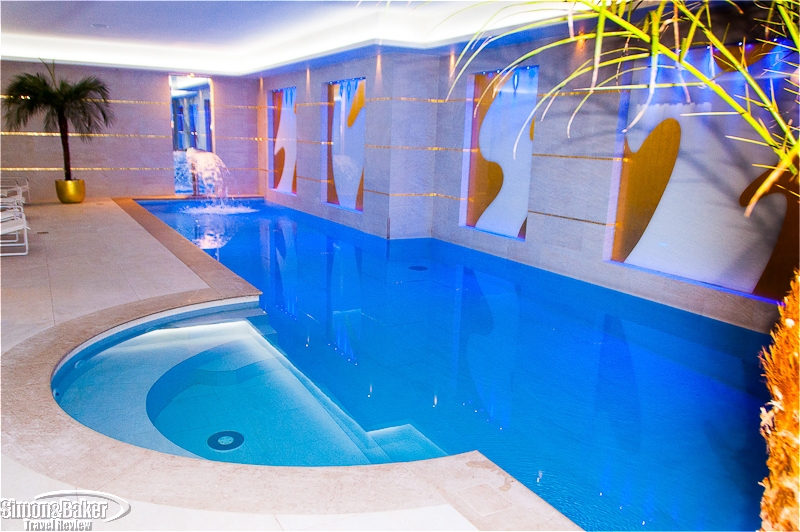
by Editor | Oct 1, 2013 | Europe, France, Paris, Simon and Baker Travel Review
In a city that is home to 50 Five Star hotels, many of them so firmly entrenched in their luxury status that they have long become legends, the relatively new Le Burgundy (opened in 2010) stood out for its privileged location first of all, on a relatively quiet street just a few steps away from Place Vendome, Rue Royale and Rue Saint-Honore, in the enclave of prestigious Right Bank addresses that are the pulse of Paris fashion. Then there was its already established reputation for personalized service, the kind only an intimate boutique hotel can provide. This was confirmed the instant I reached the property, by the doorman’s attentive welcome and the instantaneous check in process. I barely had time for a passing glance at the glassed in winter garden that is the heart of the public spaces or the art gallery like reception area with its bright mural sculpture behind a long white leather and marble reception desk before I was graciously escorted to my suite.
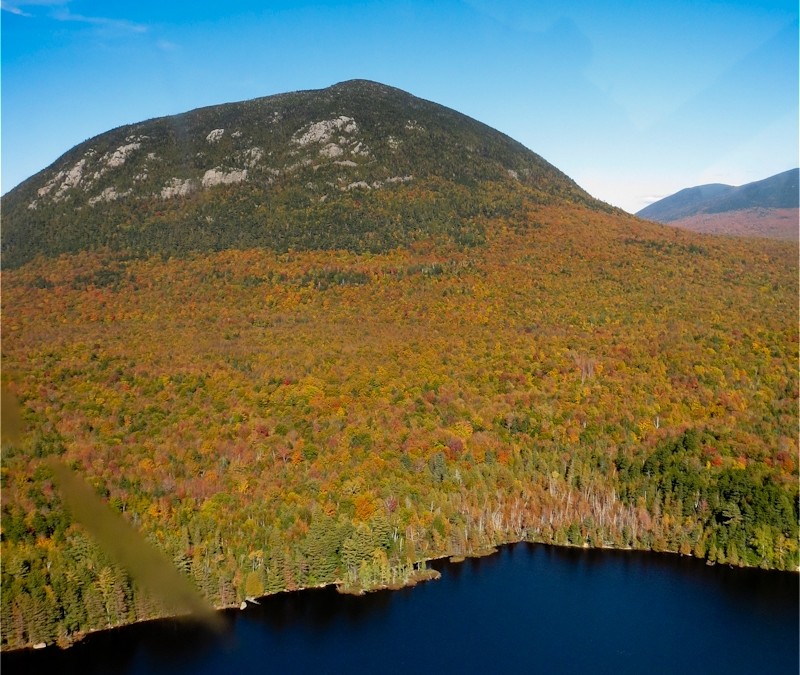
by Editor | Oct 1, 2013 | Simon and Baker Travel Review
Flying over Moosehead Lake and Lobster Lake in the Maine Highlands in a rare seven-seat 1954 de Havilland Beaver seaplane in early autumn was a memorable experience. The transition from the calm lake water to the sky on the hydroplane as we departed was seamless. One moment we were gliding away from the dock and the next we were airborne. It was equally difficult to distinguish the moment we left the air in exchange for the water in our smooth afternoon landing.
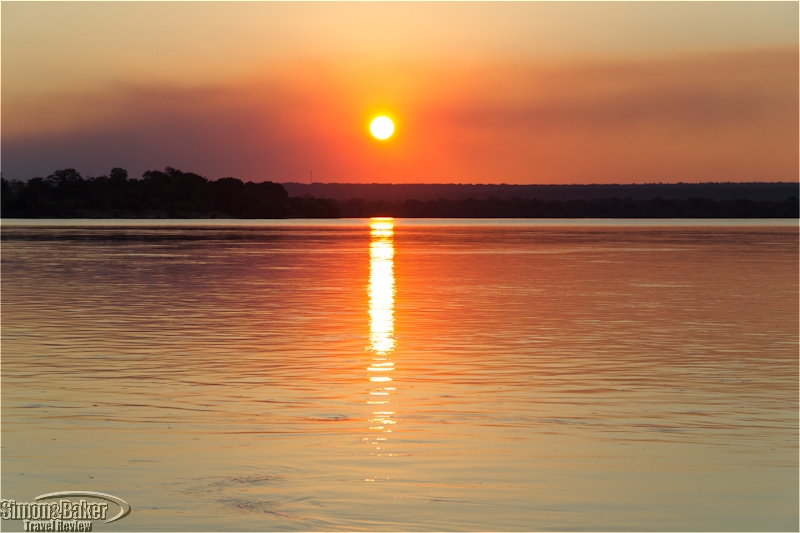
by Editor | Jun 1, 2013 | Africa, Simon and Baker Travel Review, Victoria Falls, Zambia
When I think of my stay at Tongabezi Lodge in Zambia, I can’t help but feel a sense of nostalgia. Tucked away in a lush green setting along the Zambezi River 40 minutes upstream from Victoria Falls, this luxury lodge with eleven rooms included meals, drinks, and an impressive array of activities. With a ratio of three staff members per guest, the personalized care was top notch.
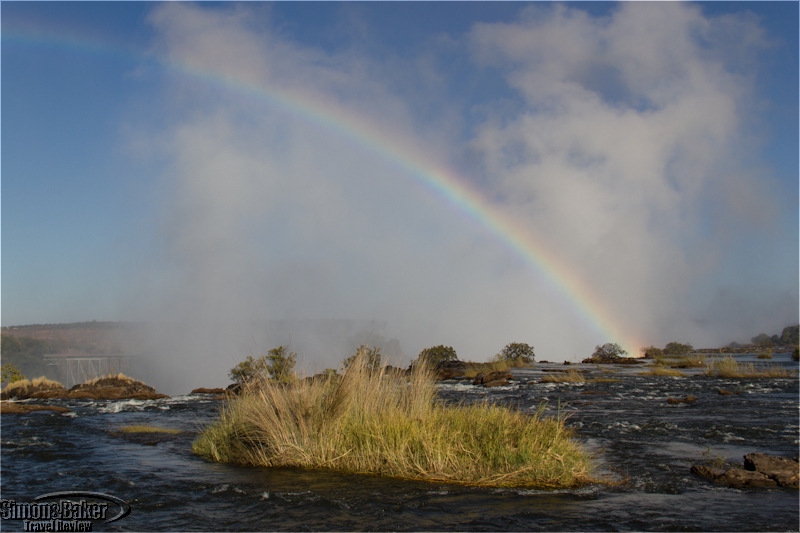
by Editor | Jun 1, 2013 | Africa, Simon and Baker Travel Review, Victoria Falls, Zambia
One of few lodges in the Livingstone Zambia area with striking views of Victoria Falls, the Stanley Safari Lodge was a tranquil haven of beautifully landscaped gardens and uniquely inspired architecture that blended naturally with its African bush surroundings. Located on a hillside away from the hustle and bustle of Livingstone it was a few minutes drive from Victoria Falls.
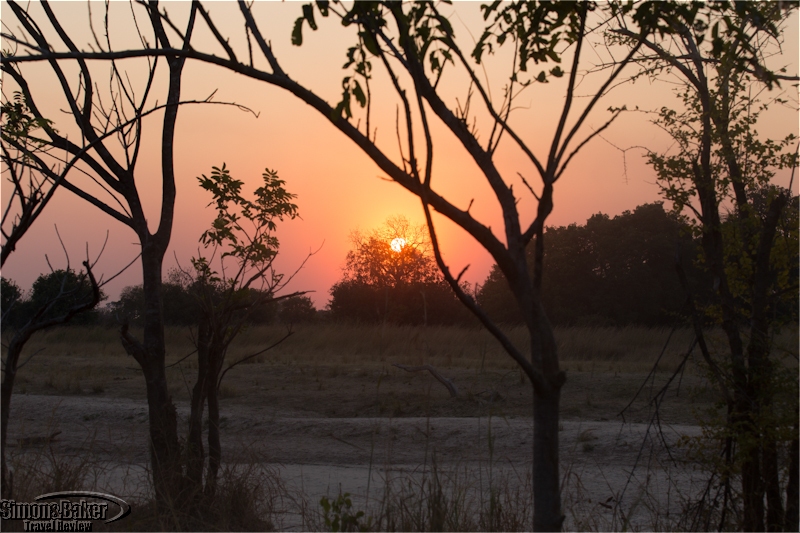
by Editor | Jun 1, 2013 | Africa, Simon and Baker Travel Review, South Luangwa, Zambia
My husband and I were delighted with our stay at the Luangwa Safari House, a private four-bedroom bush-style home with dedicated staff near one of Zambia’s best known national parks. Situated in the bush on private land the property had an estimated value of nearly one million dollars. The house was a 15-minute drive to the main entrance of the South Luangwa National Park and a five-minute drive to an alternative entrance via a pontoon crossing. The close proximity to the South Luangwa National Park facilitated safari activities within it. Staying at the House provided us plenty of opportunities to see hundreds of animals, in the national park and from the comfort of the House. Our head safari guide Jacob Shawa shared his wealth of knowledge, clear explanations of the animals we encountered, and a genuine enthusiasm for the bush. He went above and beyond the call of duty to heighten our chances of seeing animals during our bush excursions, making him our favorite guide during our 12-day stay in Zambia.

















































